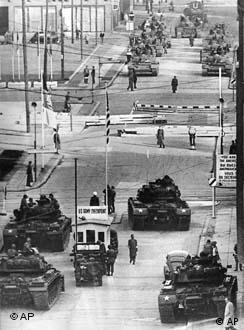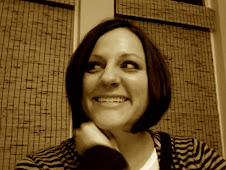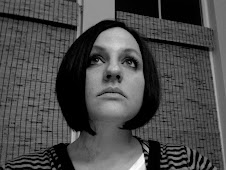
 It was freezing cold standing there reading all the posters along the street, but I wanted to read all about it anyway, so I wrapped myself up as much as possible and hung in there.
It was freezing cold standing there reading all the posters along the street, but I wanted to read all about it anyway, so I wrapped myself up as much as possible and hung in there.
I like to try to piece together events in history so I understand how things came about. For example, how did a wall all of a sudden get put up dividing a city and its inhabitants? I knew that there was only a span of 20 years between the end of World War I and the start of World War II. In fact, referring to the Treaty of Versailles, French politician Marshal Foch stated rather prophetically, “This is not peace; it is an armistice for 20 years.” When I realized today that the Berlin Wall went up less than 20 years after the end of World War II, it put things into perspective a little more.
Post-war Europe was still very unstable. Germany, and the city of Berlin, had been divided and placed under the control of France, Great Britain, The United States, and Russia. Russia controlled East Germany and East Berlin.
 West Germany adopted a government based on capitalism, a social market economy, and a democratic parliament. East Germany's government, known as the Deutsche Demokratische Republik (German Democratic Republic, or the DDR), became authoritarian and had a Soviet-style economy. People who lived in East Germany began to move to West Germany because they did not like the new oppressive East German government. East German leaders were afraid that if everyone left, the East German economy would crumble, so on August 13, 1961 they started construction of a wall dividing the entire city and told the people they were not allowed to leave the country. Can you imagine your government telling you that you could not leave?
West Germany adopted a government based on capitalism, a social market economy, and a democratic parliament. East Germany's government, known as the Deutsche Demokratische Republik (German Democratic Republic, or the DDR), became authoritarian and had a Soviet-style economy. People who lived in East Germany began to move to West Germany because they did not like the new oppressive East German government. East German leaders were afraid that if everyone left, the East German economy would crumble, so on August 13, 1961 they started construction of a wall dividing the entire city and told the people they were not allowed to leave the country. Can you imagine your government telling you that you could not leave?The wall went up quickly, barbed wire baricades turning into cement walls and militarized checkpoints. Some neighborhoods were split in half by the wall. Buildings, including churches and homes, were torn down and replaced by the two portions of the wall (the east and west walls) and the "death strip" in between.
 Families were divided, commuters were not allowed to return to work on the other side of the city, and anyone who dared try to escape the oppression was shot on the spot. I am certain the people of Germany were terrified. They knew of the horrible events of World War II. They knew that Stalin, the Soviet leader, had originally been an ally of Hitler. I personally don't think anyone trusted Stalin when treaties were made at the end of the war, but what could they do? The Allies needed Russia's help to defeat the Nazi army.
Families were divided, commuters were not allowed to return to work on the other side of the city, and anyone who dared try to escape the oppression was shot on the spot. I am certain the people of Germany were terrified. They knew of the horrible events of World War II. They knew that Stalin, the Soviet leader, had originally been an ally of Hitler. I personally don't think anyone trusted Stalin when treaties were made at the end of the war, but what could they do? The Allies needed Russia's help to defeat the Nazi army.


At one point there was a stand-off at Checkpoint Charlie. It began on 22 October, 1961 as a dispute over whether East German guards were authorized to examine the travel documents of a U.S. diplomat passing through to East Berlin. Soviet and American tanks stood facing eachother from opposite sides of the checkpoint, poised to shoot. The world waited for what they felt sure would be the start of World War III, but after hours of waiting, the stand-off ended peacefully thanks to negotiations by President John F. Kennedy.

It was impressive to me that a main reason why the Berlin Wall came down was protests by the people. They demanded to have the basic right to move around as they pleased. Also amazing to me is the fact that this just barely happend. The wall was not built hundreds of years ago, it was built in 1961! I was in sixth grade when the Berlin Wall came down on November 9, 1989. Only 20 years ago!

We wandered around the basement of the Checkpoint Charlie museum, which was very odd. There were all these brick rooms with nothing in them. One room had what looked like a strange marlbe alter, but it turned out to be just cloth on top of a table. I was eerie down there, and perhaps because we needed a little comic relief, we decided to play:




After exploring the Checkpoint Charlie displays and reading the stories of those who tried to escape and those who worked to tear down the Iron Curtain we took photos with the "guards" who now stand at the old checkpoint. We proceded down the street to view one of the largest remaining sections of the Berlin Wall. (Note: We found this section of the wall thanks to Emery's great "Alias" investigatory skills! We didn't know where it was, but Emery had taken a picture of it on our bus tour. She was very clever. It was impressive.)



We then toured the outdoor museum entitled "Topography of Terror". The museum is at the site of the former SS, Gestapo, and Nazi Party buildings. The buildings themselves were destroyed so that they would not become a mecca to Neo Nazis, but construction is underway to create a memorial to those whose lives were taken by the orders that came from those buildings before and during World War II. I cannot even begin to describe the things I read about and the pictures I saw at this museum. It all begins to be too much to handle. Let me just say that "Topography of Terror" is an accurate title.


We visited the current German House of Representatives,
 I bought a scarf from a man Emery and I dubbed the Turkish George Cloony,
I bought a scarf from a man Emery and I dubbed the Turkish George Cloony, then we walked down Freidrich Strasse, known for its great shopping.
then we walked down Freidrich Strasse, known for its great shopping. My favorite store was the Mini store. :)
My favorite store was the Mini store. :)



After an educational and enjoyable, though long, emotionally draining, and freezing cold day, Emery and I needed to relax a bit. We took Harley for a walk and picked up dinner for the two of us and Britt at Va Piano, an excellent Italian restaurant. After eating, the three of us rented "The Sisterhood of the Traveling Pants" from iTunes and enjoyed a chick-flick night.












No comments:
Post a Comment